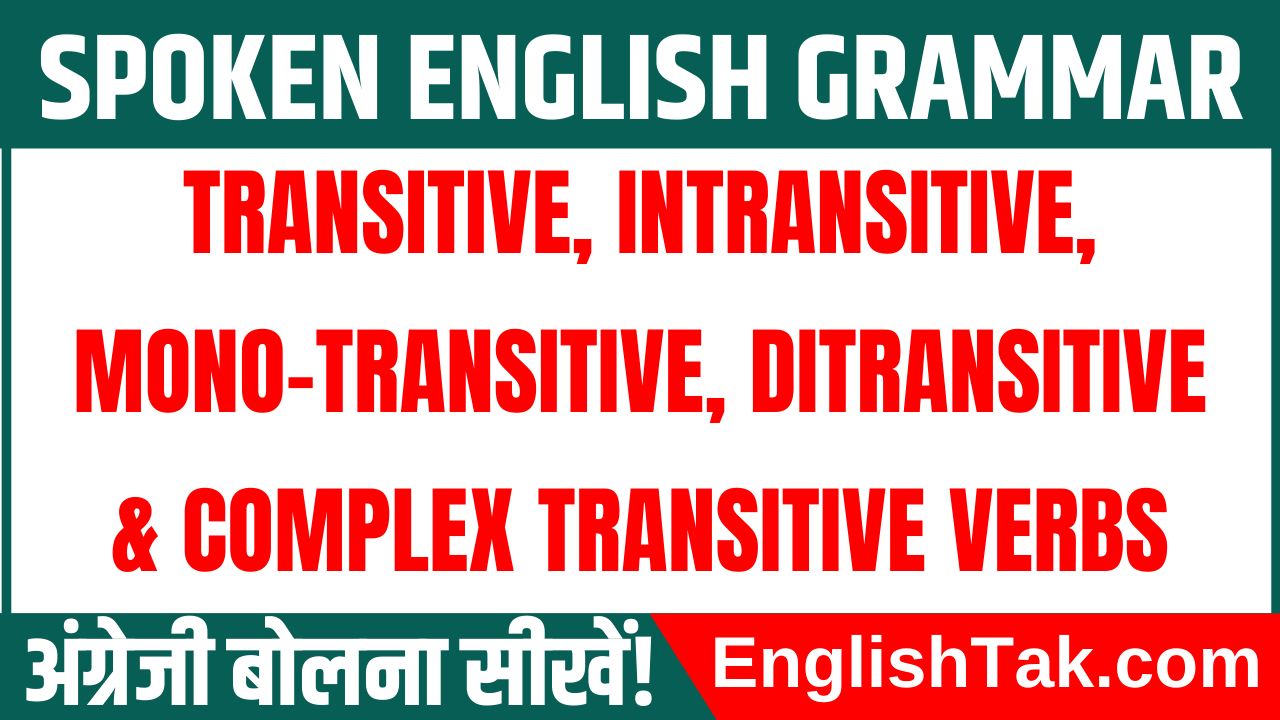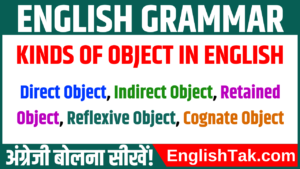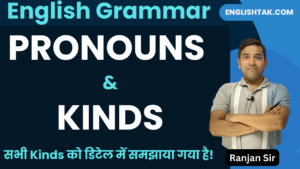![]()
Transitive Intransitive Mono-transitive & Ditransitive Verb
Table of Contents
Transitive Intransitive Mono-transitive & Ditransitive Verb:- In English grammar, verbs can be classified as transitive or intransitive based on the way they function in a sentence. The distinction between transitive and intransitive verbs is important for understanding sentence structure and determining the presence or absence of direct objects. Let’s look at the definitions and examples of transitive and intransitive verbs in English and Hindi.
Transitive & Intransitive Verbs in English
1. Transitive Verbs: A transitive verb is a verb that requires a direct object to complete its meaning. The action performed by the verb is directed towards a receiver, which is the direct object.
एक सकर्मक क्रिया एक क्रिया है जिसके अर्थ को पूरा करने के लिए एक Direct Object की आवश्यकता होती है। क्रिया द्वारा की जाने वाली क्रिया एक रिसीवर की ओर निर्देशित होती है, जो कि Direct Object होता है।
Examples:-
She reads a book. (The verb “reads” requires a direct object, “a book.”)
वह किताब पढ़ती है। (The verb “पढ़ती है” requires a direct object, “किताब”.)
They baked a cake. (The verb “baked” requires a direct object, “a cake.”)
उन्होंने केक पकाया। (The verb “पकाया” requires a direct object, “केक”.)
Types of Transitive Verbs
(i) Mono Transitive Verbs: Mono transitive verbs are transitive verbs that require a single direct object to complete their meaning. These verbs convey an action that is directed towards a specific receiver.
Mono Transitive Verbs वो क्रियाएं हैं, जिन्हें अपना अर्थ पूरा करने के लिए सिर्फ एक Direct Object की आवश्यकता होती है।
Examples:-
She bought a new car. (The verb “bought” requires a single direct object, “a new car.”)
उसने एक नई कार ख़रीदी। (The verb “ख़रीदी” requires a single direct object, “एक नई कार”.)
They built a house. (The verb “built” requires a single direct object, “a house.”)
उन्होंने एक घर बनाया। (The verb “बनाया” requires a single direct object, “एक घर”.)
Note:- It’s important to note that mono transitive verbs cannot take more than one direct object. If multiple objects are involved, a different type of transitive verb, such as ditransitive verbs, would be used.
Verb in English and Hindi
(ii) Ditransitive Verbs:- Ditransitive verbs require two objects—a direct object and an indirect object—to complete their meaning. The indirect object indicates the recipient or beneficiary of the action, while the direct object indicates the target or result of the action.
Ditransitive verbs वो Verbs होते है, जिसे एक Direct Object और साथ ही साथ एक Indirect Object की जरुरत होती है। Indirect Object क्रिया के प्राप्तकर्ता या लाभार्थी को इंगित करती है, जबकि Direct Object क्रिया के लक्ष्य या परिणाम को इंगित करती है।
Examples:-
She gave him a gift. (The verb “gave” requires two objects: the direct object “a gift” and the indirect object “him.”)
उसने उसे एक उपहार दिया। (The verb “दिया” requires two objects: the direct object “एक उपहार” and the indirect object “उसे”.)
They showed their friends a photo. (The verb “showed” requires two objects: the direct object “a photo” and the indirect object “their friends.”)
उन्होंने अपने दोस्तों को एक फ़ोटो दिखाई। (The verb “दिखाई” requires two objects: the direct object “एक फ़ोटो” and the indirect object “अपने दोस्तों को”.)
Note:- Remember that mono transitive verbs, as well as ditransitive verbs, are specific types of transitive verbs that require objects to complete their meaning.
Complex Transitive Verb in English
(iii) Complex Transitive Verbs:- Complex transitive verbs are transitive verbs that require both a direct object and a complement to convey a complete meaning. The direct object receives the action of the verb, while the complement provides further information or describes the state of the direct object.
Complex transitive verbs वो क्रियाएं हैं जिन्हें एक पूर्ण अर्थ व्यक्त करने के लिए Direct Object और साथ ही साथ एक Complement दोनों की आवश्यकता होती है। Direct object क्रिया को प्राप्त करती है, जबकि Complement आगे की जानकारी प्रदान करता है या Direct Object की स्थिति का वर्णन करता है।
Examples:-
She considered him her best friend. (The verb “considered” requires a direct object, “him,” and a complement, “her best friend.”)
उसने उसे अपना सबसे अच्छा दोस्त समझा। (The verb “समझा” requires a direct object, “उसे,” and a complement, “अपना सबसे अच्छा दोस्त.”)
They elected him president. (The verb “elected” requires a direct object, “him,” and a complement, “president.”)
उन्होंने उसे राष्ट्रपति चुना। (The verb “चुना” requires a direct object, “उसे,” and a complement, “राष्ट्रपति.”)
In the given examples, the direct objects (“him” / “उसे”) receive the action of the verbs, while the complements (“her best friend” and “president” in English, and “अपना सबसे अच्छा दोस्त” and “राष्ट्रपति” in Hindi) provide additional information or describe the state of the direct objects.
What is Verb in English
It’s important to note that not all transitive verbs are complex transitive verbs. Some transitive verbs only require a direct object without a complement, while others may require additional prepositional phrases or adverbial modifiers. The classification of a verb as complex transitive depends on its specific requirement for both a direct object and a complement.
इस बात का महत्वपूर्ण ध्यान देना चाहिए कि सभी Transitive Verbs, Complex Transitive Verbs नहीं होती हैं। कुछ Transitive Verbs को केवल एक Direct Object की आवश्यकता होती हैं बिना किसी पूरक के, जबकि कुछ के लिए अतिरिक्त पूरकीय वाक्यांश या क्रियाविशेषक आवश्यक हो सकते हैं।
Intransitive Verbs in English Grammar
2. Intransitive Verbs: An intransitive verb is a verb that does not require a direct object to complete its meaning. The action performed by the verb does not have a specific receiver or target.
Examples:-
He runs every morning. (The verb “runs” does not require a direct object.)
वह हर सुबह दौड़ता है। (The verb “दौड़ता है” does not require a direct object.)
The bird sings beautifully. (The verb “sings” does not require a direct object.)
पक्षी सुंदरता से गाता है। (The verb “गाता है” does not require a direct object.)
Transitive Intransitive Mono-transitive & Ditransitive Verb
Note:- It’s important to note that some verbs can be both transitive and intransitive, depending on the context and usage in a sentence. For example:
Transitive: She opened the door. (The verb “opened” is transitive and requires a direct object, “the door.”)
Intransitive: The door opened. (The same verb “opened” is intransitive here, as it does not require a direct object.)
Remember that the classification of a verb as transitive or intransitive is determined by the verb’s inherent nature and usage, rather than the presence or absence of a direct object in a specific sentence.
English Grammar in Hindi
English Grammar Degree of Comparison Rules
Some Amazing rules of English Grammar
Quasi Passive Verbs in English
Top 10 Tips & Questions for Interview
Adjectives Rules in Hindi & English
Noise Pollution Essay For All Exams





